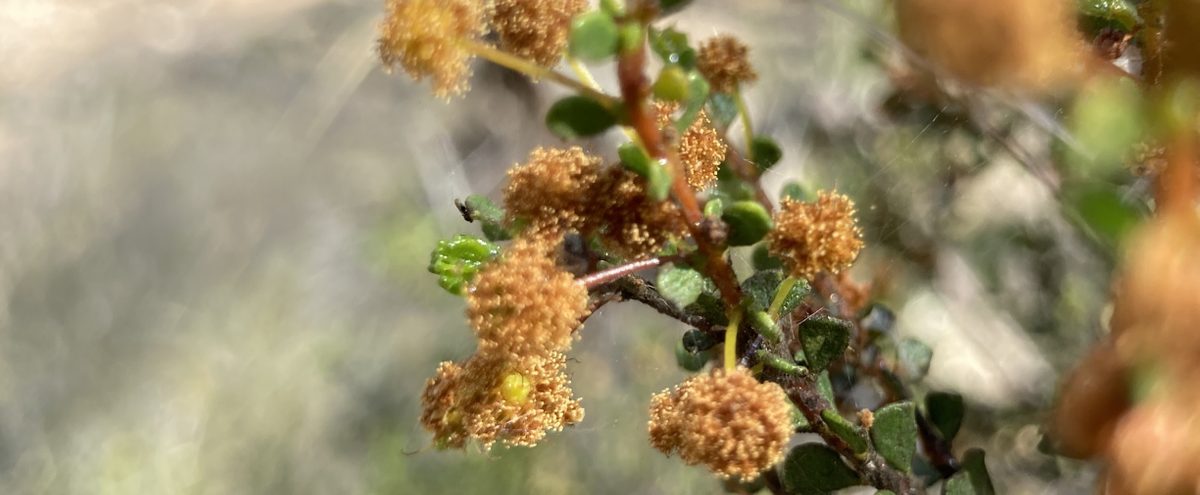
Resin Wattle
The resin wattle (Acacia rhetinocarpa) is listed as nationally vulnerable with less than 3000 plants left in the Murraylands and Riverlands region. Landscape board ecologists are working with the community to conserve remaining resin wattles through monitoring and by supporting landholders with known clusters of plants.
What is a resin wattle?
The resin wattle is a perennial erect, compact, rounded, and resinous spreading shrub, reaching 0.5-1.5 m in height. It has hairy branchlets that are light yellowish-brown but become dark grey towards the base. The glossy leaves are very small (generally 2-3mm long) and resinous.
The flowerheads are bright yellow globes, containing 12-15 individual flowers. Resin wattle flowers between August and October, with seeds released and collected between November and January. Seeds are dark brown to black and may be oblong to elliptical in shape, up to 4 mm long and 2 mm wide.
Where is resin wattle found?
The resin wattle is endemic to South Australia, and in the Murraylands and Riverland region it is restricted to the Monarto, Brinkley and Murray Bridge areas. It can be found growing in open scrub vegetation associated with Eucalyptus gracilis, E. socialis and E. incrassataon calcareous sand and loamy soils.

Why are resin wattles under threat?
The resin wattle is under threat from grazing by overabundant native animals such as kangaroos, livestock and feral herbivores, as well as competition from weed species.
Invasive weeds are easily able to outcompete seedlings, particularly weedy species such as perennial veldt grass (Ehrharta calycina), and bridal creeper (Asparagus asparagoides) which smothers plants.
Like most Acacia species, resin wattle is highly adapted to fire, relying on a combination of heat, smoke and water to stimulate germination of seeds. Lack of fire in the landscape can contribute to low levels of seedling regeneration.
What is being done to protect resin wattle?
Landscape board ecologists are working with landholders and partner agencies to monitor known communities. This work includes regular surveys, and undertaking pest control work and fencing for additional protection. Resin wattle has also been used in revegetation projects on private land. Some landholders have protected their natural resin wattle populations under a Heritage Agreement so the vegetation is conserved in perpetuity.

How you can help!
Some of the ways in which you can help preserve native plants include:
- Preventing damage caused by grazing.
- Preventing removal/illegal collection.
- Controlling weeds to reduce competition.
- Taking a photo instead of picking the flower.
- Volunteering with the Murraylands and Riverland Landscape Board or joining your local native vegetation group.
- Reporting any sighting of these endangered plants to our offices
What should I do if I see a resin wattle?
If you are lucky enough to see a resin wattle, the most important thing to remember is to not touch or remove it. Take a photo and contact our ecologist who will help to formally identify the plant. They can offer you support and advice about this vulnerable species so you can play a vital role in conserving our unique native biodiversity.